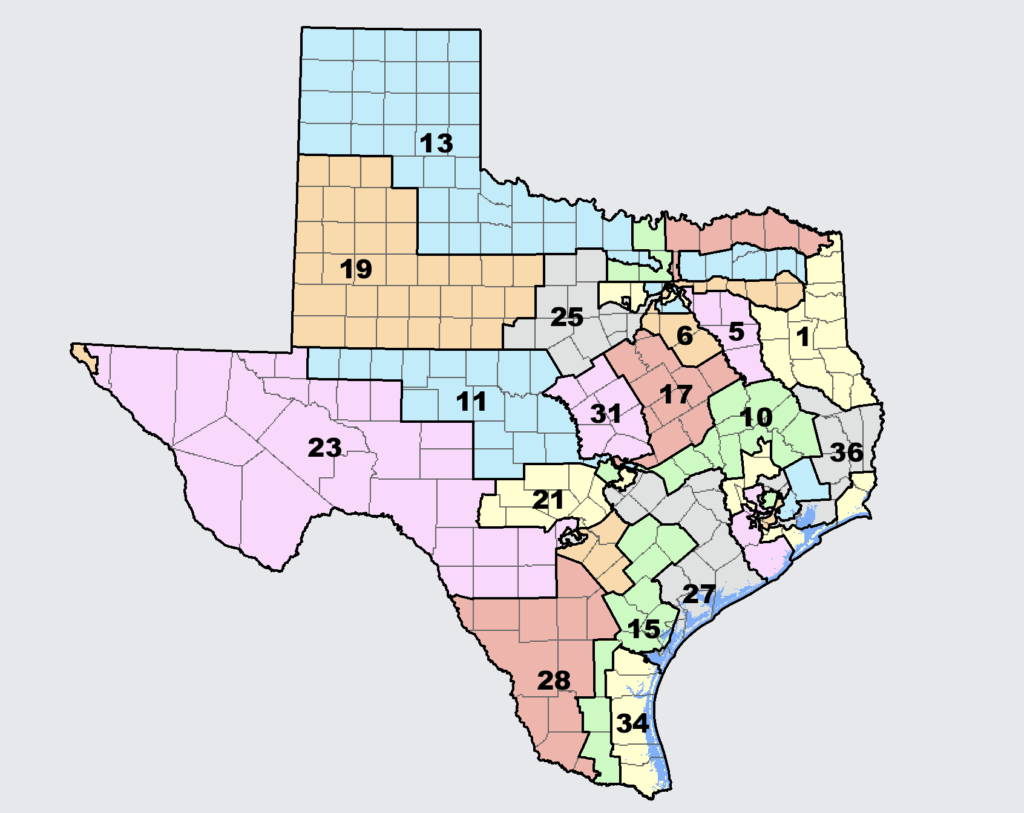Top GOP Mapmaker Describes a Texas Gerrymander Ordered Up By Washington

EL PASO, TEXAS — The Republican Party’s top mapmaker testified in federal court Wednesday that while he’s been instructed in the past to preserve minority congressional districts protected by the Voting Rights Act, he received no such direction when drawing Texas’ new gerrymander this summer.
Adam Kincaid, the director of the National Republican Redistricting Trust, told the court he was instructed when drawing South Carolina’s map to preserve the seat of Rep. Jim Clyburn (D), the state’s only district where Black voters make up a majority. And when he drew the Texas map in 2021, he was told not to break up certain majority-minority districts, too.
“I was instructed to work around some of the districts in the Houston area and some of the districts in the Dallas-Fort Worth area,” Kincaid said of the former map, adding this direction came after a deal was struck in the Texas House.
This year, however, it appears Texas handed the keys to its congressional map over to Washington. Kincaid said he received directions only from the White House, as well as requests from the Texas Republican congressional delegation.
Kincaid’s answers could bolster testimony from a Democratic lawmaker who said Thursday that Republican leadership used minority voters as “pawns” when drawing the new map.
Minority voters* and voting advocates are asking a federal court to block the map, arguing it discriminates against minority communities by eliminating some districts across the state where they’ve been able to elect the candidates of their choice.
Texas insists the map was drawn only with the aim of creating new Republican seats in Congress. If allowed to stand, it could give the GOP five additional seats in Congress, boosting their chances of retaining the House next year.
Kincaid, asked whether he knew Texans gave hours of feedback in public hearings complaining of racial discrimination, said only, “I’m aware of them, yes.”
Testifying on Tuesday, Kincaid said he hadn’t taken that public input into account, listening only to the White House and Texas GOP members of Congress.
During the legislative session, Republicans blocked Democratic lawmakers’ efforts to subpoena Kincaid to answer questions at a committee hearing.
In court, the state has continued to shield Kincaid from answering some questions. The state presented Kincaid on Tuesday not as an expert but as a lay witness, allowing him to testify he didn’t use racial data to draw the map – without having to provide detailed versions of the work he did.
The state argued Wednesday Kincaid did not have to reveal what requests he received from the GOP congressional delegation, since he was retained by the Republican National Committee (RNC) to draw the map and therefore covered by attorney-client privilege.
The plaintiffs’ attorneys argued it would be “extraordinary” if they could not ask the mapmaker about why he drew the map the way he did. The three-judge panel allowed Kincaid not to answer.
Before Kincaid left the stand, U.S. District Judge Jeffrey V. Brown, a Trump appointee, asked some questions of his own. He pressed Kincaid on whether he knew some of the districts he targeted provided minorities an opportunity to elect their candidate of choice.
Kincaid responded, “I did.”
Brown also asked Kincaid why he broke up District 9, but not District 7. Both are Democratic-held seats in Houston, but District 9 is represented by Rep. Al Green, who is Black, while District 7 is represented by Rep. Lizzie Fletcher, who is white.
Kincaid said it was because three Republican members held seats surrounding District 7, which made it difficult to break up.
Other state witnesses included state Sen. Adam Hinojosa (R) and Christina Adkins, the elections division director of the Texas Secretary of State’s office.
While experts this week have testified the new map rolls back minority voting power, Hinojosa testified many Latino residents in his district in fact supported President Donald Trump in 2024, arguing they had aligned with Republicans because they were “voting their values.” When questioned by Nina Perales, an attorney with the Mexican American Legal Defense and Educational Fund (MALDEF), Hinojosa acknowledged many of those voters actually split their ticket – voting for Trump for president, while also choosing the Democratic candidates for U.S. Senate and U.S. House seats.
Asked Wednesday whether he knows who drew the new Texas congressional map, Hinojosa – who voted for the measure – said, “I don’t.”
A moment later, he was asked what he discussed with Kincaid and state Sen. Phil King (R), the chair of the Senate redistricting committee, when they spoke to each other at a conference in mid-July.
Hinojosa claimed legislative privilege, declining to answer.
Some Texas voters are represented by the Elias Law Group (ELG). ELG firm chair Marc Elias is the founder of Democracy Docket.